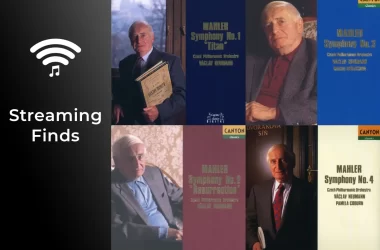The challenge in performing these piano pieces is to balance their miniature scale with the need to give each one a distinct character. The best accounts project a clear profile through Chopin’s flexible melody and harmony without losing the music’s dance identity.

The early, posthumous WN Mazurkas (written before 1830) serve as a prelude to the Op. 6 publication, and their youthful ease is apparent. In the B-flat major (track 1), Ingrid Fliter keeps the dance’s swing while letting the rhythms breathe, and the small ornamental turns speak cleanly. The C major (track 2) balances a robust, pastoral stance with lighter, capricious episodes. The minor-key No. 3 (track 3) avoids undue heaviness; a touch of chromatic mystery is enough.
The suppleness of Op. 6 No. 1 (track 10) is especially well judged, with a subtle sheen to the meandering lines. Op. 7 No. 1 (track 12) is less convincing: the broadened ritardandi aim for wit but risk breaking the flow. Peter Jablonski’s account, which maintains buoyancy without losing character, remains a useful point of reference (reviewed here).
In the middle sets, Chopin takes a freer approach to the Mazurka form, exploring texture and color with particular boldness. In the C major from Op. 24 (track 17), he threads trills, runs, and inner-voice melodies into a lively mix that Fliter plays with buoyant poise, her light touch lending an easy, improvisatory feel. In Op. 24 No. 4 (track 19), her graceful shaping yields a quieter atmosphere, polished with a touch of elegance.
Op. 50 No. 3 (track 22) behaves differently from a typical Mazurka. Its momentum and character come from lyricism rather than dance rhythm; only the middle section returns to the dance. Fliter highlights the contrapuntal writing with clear voicing, tracing each line cleanly and managing the handoffs between voices with precision. In Op. 59, the fiery F-sharp minor (track 25) is a highlight, played with firm resolve and flashes of unrestrained energy in the closing section.

Ingrid Fliter
A side-by-side listen to the early WN Mazurkas and the Op. 63 set makes Chopin’s trajectory clear: finesse gradually replaces youthful bounce, and the melancholy tilts toward a more bel canto inflection. In both the F minor and C-sharp minor Mazurkas (tracks 26 & 27), the glossy tone noted earlier turns inward—more reflective, but no less expressive.
Fliter’s refined tone coloring, so evident in her earlier recordings, is present here, though not always easy to appreciate. She plays a Fazioli grand, recorded at the Fazioli Concert Hall in Sacile, Italy, and despite the instrument’s qualities, the sound can feel boxy and a little airless. Even so, the performance draws focus quickly, and the ear adjusts after a few minutes.
Jim Samson’s notes are concise and accessible, pointing out key musical features without excess theory. Given the quality of these performances, a brief foreword from Fliter outlining her aims for this first volume would have added useful perspective. Even so, the interpretations are tasteful and well shaped, and Volume 2 will be worth following.

Album Details |
|
|---|---|
| Album name | Mazurkas, Vol. 1 |
| Label | Linn |
| Catalogue No. | CKD780 |
| Artists | Ingrid Fliter |















